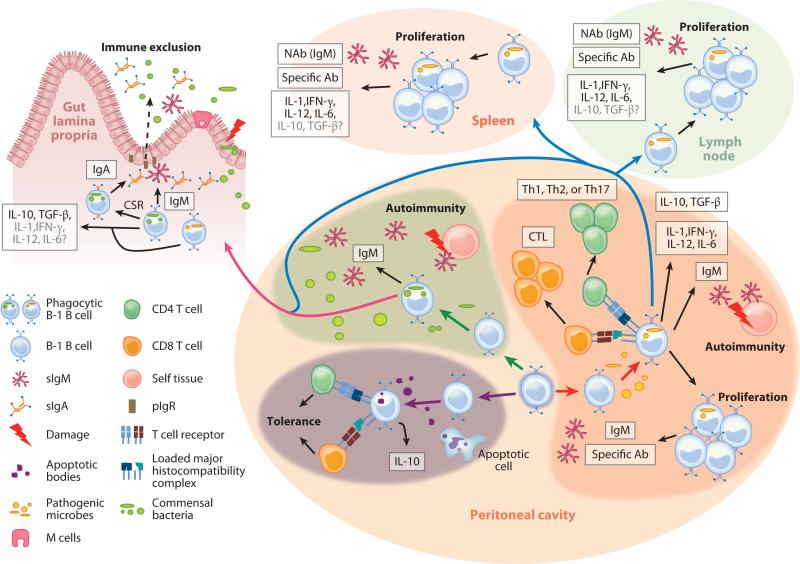Figure 3.
Hypothetical roles of phagocytic B-1 B cells. In peritoneal cavity (PerC), B-1 B cells phagocytose apoptotic bodies (purple arrows) generated from apoptotic cells, which may lead to the secretion of IL-10 by these cells. Subsequent antigen presentation of epitopes from apoptotic bodies will likely induce T cell tolerance. In a different scenario, and as a result of injury or inflammatory damage, commensal bacteria may leak from the gut lumen into the PerC, where phagocytic B-1 B cells engulf them (green arrows). Alternatively, these cells could phagocytose pathogenic bacteria that have intruded into the PerC (red arrows). As result, phagocytic B-1 B cells may secrete polyreactive immunoglobulin M (IgM), which can recognize either leaked commensals or pathogenic microbes found in the PerC. It is also possible that after clonal expansion, they secrete specific antibodies against pathogenic bacteria. In addition, some of the secreted IgM may recognize self-antigens and thus play a role in autoimmunity. After ingesting commensals or pathogens, phagocytic B-1 B cells may migrate into the gut lamina propria (pink arrow) or the spleen or peripheral lymph nodes (blue arrows). In those sites, the phagocytic B cells may produce polyreactive IgM or IgA [after class switch recombination (CSR)]. The produced IgA and IgM will be transported into the gut lumen (dashed arrow) to coat commensals, thus playing a role in immune exclusion. In addition, phagocytosis by B-1 B cells may lead to their expression of proinflammatory cytokines in PerC, spleen, and lymph nodes, whereas their expression of anti-inflammatory cytokines is less likely (indicated in gray with question mark). Conversely, production of anti-inflammatory cytokines by phagocytic B-1 B cells that have migrated into the gut lamina propria likely is more probable than production of proinflammatory cytokines.

